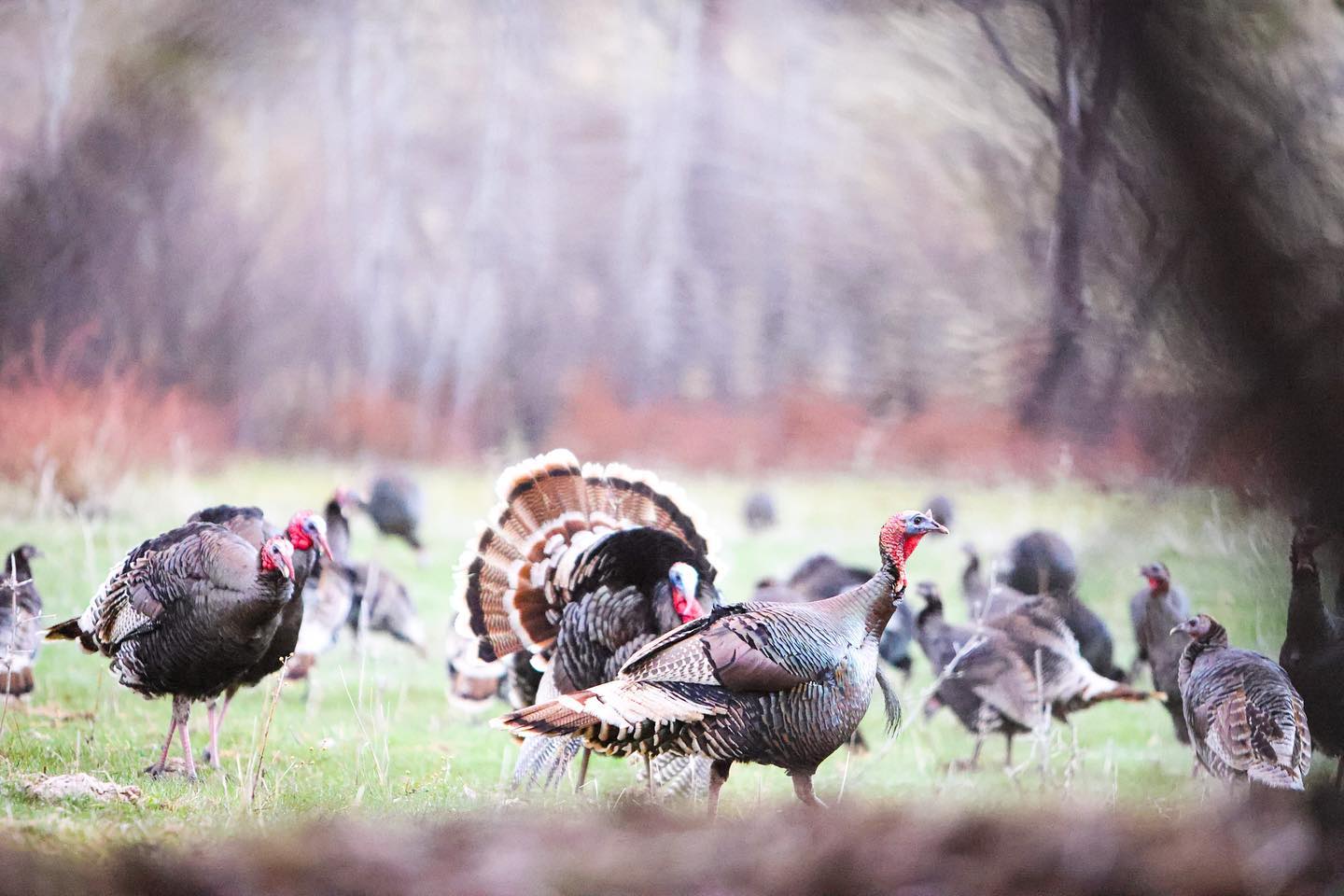Hunting gobblers on public land during turkey season is no walk in the woods—especially when you’re sharing that same chunk of ground with dozens of other hunters. Birds get smart fast, calls become background noise, and every footstep echoes like a warning signal. But don’t hang up your vest just yet—success is absolutely possible with the right approach. Here’s a breakdown of the tactics, mindset, and strategies that’ll help you punch your tag on even the most pressured gobblers this spring.
1. Scout Smarter, Not Harder
Public land birds are survivors. If you’re waiting until opening morning to locate gobblers, you’re already behind.
🔍 Off-Season Intel Is Gold
Start scouting before the season. Use topo maps and apps like OnX or HuntStand to identify isolated hardwood ridges, transition zones, creek crossings, and overlooked corners of WMA properties. Focus on:
- Roosting areas: Look for tall, mature trees with a wide view.
- Strut zones: Open flats or logging roads are often turkey runways.
- Feeding areas: Green fields and oak bottoms get early action.
🚶Boots on the Ground
Once you’ve e-scouted, lace up and hit those spots before daylight to listen for gobbles. Mark patterns—where they fly down, where they head mid-morning, and how they respond to pressure.
2. Get Away from the Parking Lot Crowd
If you can hear a truck door slam from your setup, you’re too close. Most hunters stick within a half-mile of parking areas. Break that mold.
🌲 Go Deep or Go Sneaky
- Backpack in before first light and set up farther than the average hunter will hike.
- Check overlooked spots—small patches near roads or swamps that look too “tough” often hold birds.
The goal is to hunt where others won’t.
3. Sound Different—Or Don’t Sound at All
On pressured land, gobblers hear more yelps than a help desk operator.
🗣️ Call Like a Bird, Not a Box
- Use soft clucks and purrs instead of loud cutting and aggressive yelping.
- Switch to a diaphragm or pot call that doesn’t sound factory-made.
- Be the second hen, not the first. Let another hunter get the bird fired up, then you intercept with subtle, natural-sounding calls.
🧘 Patience Is a Killer Trait
Sometimes, the best call is none at all. A pressured gobbler may sneak in silently after being hammered with calls all morning. Set up in known travel zones, stay still, and wait. Trust your scouting.
4. Hunt Late Morning and Weekdays
Everyone loves a fly-down hunt at sunrise, but public-land birds learn quickly that gobbling at dawn is dangerous.
🕙 Mid-Morning to Early Afternoon = Gold
- Once hens leave to nest, gobblers get lonely and more callable.
- Target 10 a.m. to 2 p.m.—fewer hunters, less noise, and more responsive toms.
If your state allows it, hunt weekdays. You’ll have the woods to yourself compared to Saturday madness.
5. Use Terrain to Your Advantage
Public land is rarely flat and easy, and that works in your favor.
- Set up just below ridgelines to avoid being skylined.
- Use creeks, ridges, and ditches to move silently and break up your outline.
- Remember: You’re not just hunting turkeys—you’re avoiding humans. Terrain helps you do both.
6. Hunt With Safety and Respect
Crowded public land means an increased risk of accidental encounters.
- Always wear orange when moving—even during turkey season.
- Don’t stalk a gobble unless you’re 100% sure it’s a bird and not a hunter.
- Leave spots cleaner than you found them. Trash ruins it for everyone.
Final Thoughts: Pressure Builds Skill
Hunting gobblers on pressured public land is a grind, but it’s also incredibly rewarding. The bird you tag here isn’t just a trophy—it’s a symbol of grit, skill, and outsmarting both man and bird. Stay mobile, stay quiet, and above all, stay persistent. Some of the best gobblers you’ll ever take are the ones no one else could.


